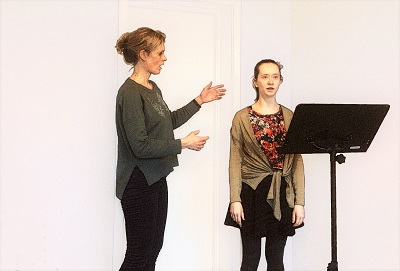Merging the arts of song and dance
New methodical options for teaching students within the disciplines of song and dance
DOI:
https://doi.org/10.7577/information.v6i1.2885Abstract
To learn, acquire knowledge, and develop skills is an embodied process. In this article, the authors argue that merging the fields of song and dance is dependent on a deeper understanding of how the mind and the body interact, and they utilize the concept of enactive cognition to explain these processes. The authors maintain that students need insight into these processes in order to improve their learning and, consequently, their performance. Retrospective examples taken from three educational situations within the musical theatre context elucidate the discussion of the concepts of alignment and breathing. These frequently used concepts are often a source of confusion and misunderstanding for the student. To alleviate this, a stronger, interdisciplinary dialogue among the singing and dance teachers who are involved in the genre of musical theatre needs to be developed. The authors suggest collaborative teaching as a means to develop the teaching methods and as the pathway to attaining a common base when integrating the skills of singing and dancing.

Downloads
Published
How to Cite
Issue
Section
License
Authors who publish with this journal agree to the following terms:
- Authors retain copyright and grant the journal right of first publication with the work simultaneously licensed under a Creative Commons Attribution License that allows others to share the work with an acknowledgement of the work's authorship and initial publication in this journal.
- Authors are able to enter into separate, additional contractual arrangements for the non-exclusive distribution of the journal's published version of the work (e.g., post it to an institutional repository or publish it in a book), with an acknowledgement of its initial publication in this journal.
- Authors are permitted and encouraged to post their work online (e.g., in institutional repositories or on their website) prior to and during the submission process, as it can lead to productive exchanges, as well as earlier and greater citation of published work (See The Effect of Open Access).